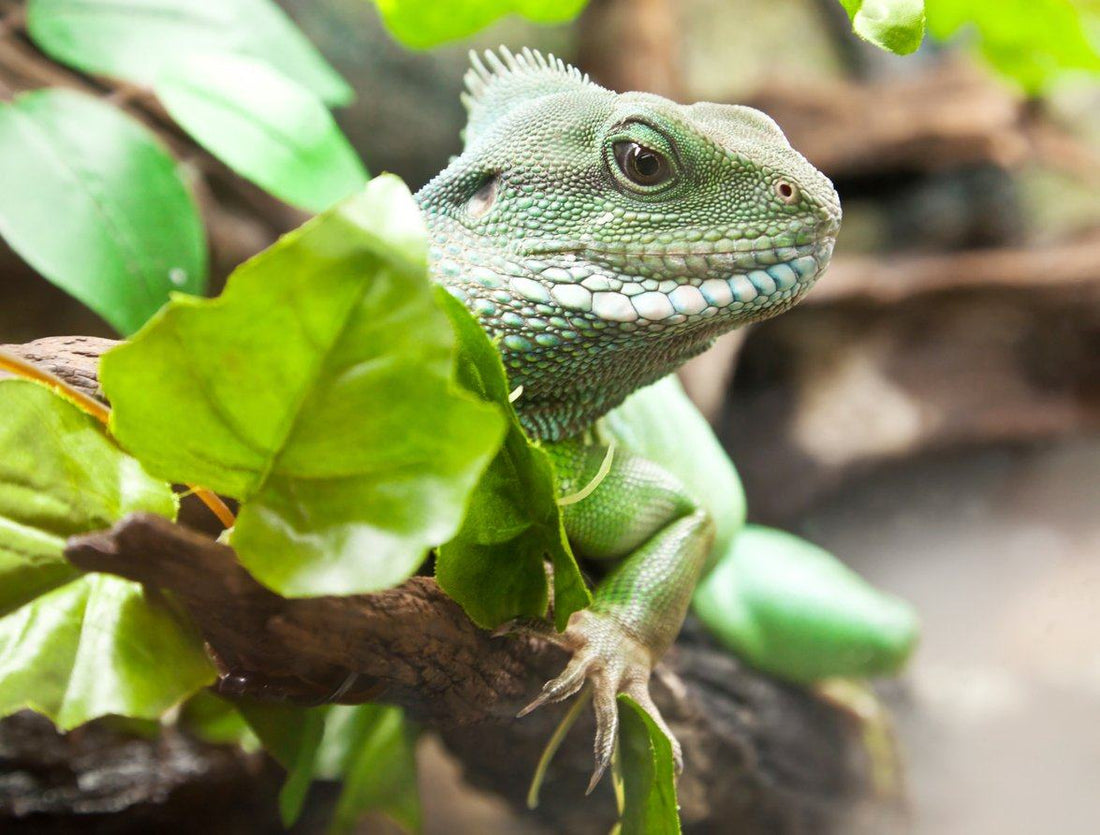Believe it or not, reptile parasites have a lot of potential causes outside of feeder insects. Anti-parasitic medications can be traumatic for a reptile’s system, so although you can rely on repeated doses of medication to keep internal parasites in check, the best treatment is prevention. Here’s how to prevent reptile parasites from taking root in your collection!
Be Careful Where You Buy
Since parasites spread from infected animal to infected animal, breeders, pet stores, and even reptile rescues are common vectors of parasites. For example, cryptosporidiosis is particularly common in captive bred leopard geckos.
Before purchasing a reptile, demand proof of a clean fecal sample from the retailer. This is particularly important for breeders and reptile rescues. Avoid pet stores when you can. Aside from usually having parasite problems from cross-contamination, they also frequently sell wild-caught reptiles, which are often heavily parasitized.
Quarantine New Additions
When you bring home a new reptile, it’s important to quarantine the new addition before putting them in their long-term enclosure or even putting them in your reptile room. Quarantine is critical for protecting the rest of your reptiles from any parasites, viruses, or other pathogens the new addition might be carrying.
Quarantine should last at least 3 months, if not more. Perform a fecal check each month. Once any parasites have been diagnosed and treated, make sure the reptile passes two clear fecal checks before exiting quarantine.
Don’t Recycle
Recycling is good practice in the context of materials like paper, plastic, metal, and glass, but it’s not good practice in your reptile room. Recycling is one of the most common ways that parasites spread in animal collections.
Don’t put uneaten prey from one enclosure into another enclosure, as this transfers one reptile’s germs to another. This is particularly the case for live feeders, which dine on the feces of the reptile while wandering around the enclosure, then carry those parasites to the next reptile that does eat them.
Similarly, if you have a colony, never return uneaten feeders back to the main colony. If the reptile they were exposed to has parasites, then returning those bugs to the colony risks spreading those parasites to all of the bugs in the colony. That way, you reintroduce parasites back to your reptile and every other reptile that eats those bugs.
Use Captive-Bred Prey
Wild-caught prey is more likely to contain intermediate-stage reptile parasites than captive-bred, especially ones that have been farmed in high-quality facilities with a high-quality diet. Don’t trust insects purchased from bait shops (ex: earthworms and waxworms) either, as the sanitation behind those feeders is questionable.
For best results, only purchase your feeders from reputable breeders with high standards of quality for their animals’ nutrition and hygiene, like DubiaRoaches.com!
Use Frozen-Thawed Prey
The freezing process kills most internal and external parasites, which means that frozen-thawed rodents are likely to be safer feeders for your reptile than live. Best practice is to make sure prey has been frozen solid for at least 30 days before thawing and offering as food.
Use More Canned Insects
The canning process involves cooking insects in the can under high temperatures. These temperatures are higher than most parasites can survive, which means that canned insects are likely to be safer than live or dried.
Remove Feces Immediately
Daily spot cleaning isn’t just to keep your enclosure looking tidy, or even to prevent your reptile from getting covered in its own poo. The immediate removal of feces goes a long way toward reducing the total parasite population by removing shed eggs. A reptile consistently exposed to its own feces can become reinfected by parasites that rely on direct transmission tactics, increasing its parasite load. For best results, don’t just remove the poo during spot cleaning — also remove the surrounding substrate which may have been contaminated.
And yes, this goes for bioactive setups, too!
Make Sure Husbandry is Correct
Poor husbandry leads to decreased immune function, which increases the likelihood that your reptile’s body will become overwhelmed by existing parasites. Insufficient UVB, low basking temperature, improper humidity, cohabitation, and other factors can lead to stress-induced booms in existing parasite populations.
Practice Good Hygiene
Good hygiene is more than just daily spot cleaning. Make sure to change your reptile’s substrate regularly — at least once a quarter for loose substrates, and solid substrates should be changed out every time they become contaminated.
Change your reptile’s drinking water often, at least twice a week, and scrub the water bowls with veterinary disinfectant like F10SC, Roccal, or Nolvasan at least twice a month.
Disinfect the enclosure during routine substrate changes with a veterinary disinfectant. Alternatively you can use 1-2tsp of antibacterial dish soap with ¼ to ½ cup bleach and 1 gallon of water. 5% ammonia is known to be effective on coccidia in particular.
Never share used tools and equipment between enclosures, such as food/water bowls, feeding tweezers, hide boxes, etc. Similarly, never place new equipment (whether purchased secondhand or at a pet store) in the enclosure without disinfecting it first.
Wash your hands between interactions with each animal, or at least use hand sanitizer.
Conclusion
The best way to deal with parasites in your pet reptile(s) is to prevent them from spreading in the first place. Use these nine tips to help make sure your pets stay healthy for years to come!











